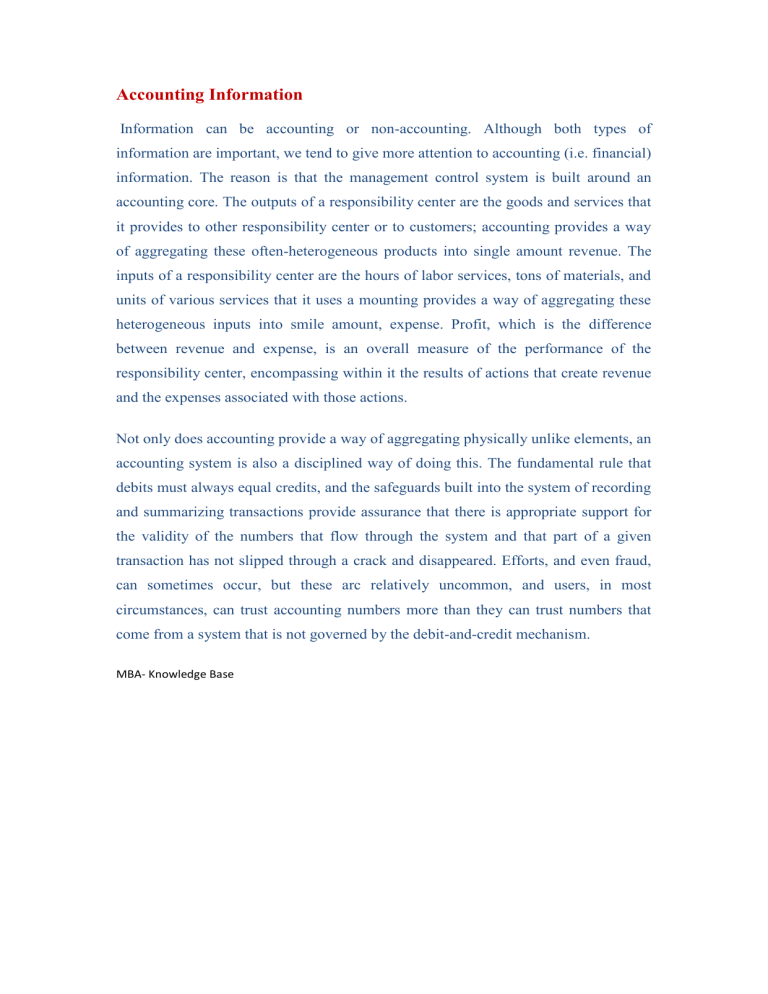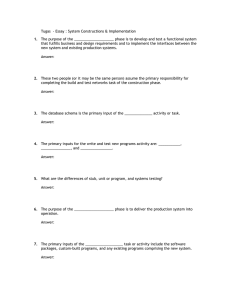Accounting Information

Accounting Information
Information can be accounting or non-accounting. Although both types of information are important, we tend to give more attention to accounting (i.e. financial) information. The reason is that the management control system is built around an accounting core. The outputs of a responsibility center are the goods and services that it provides to other responsibility center or to customers; accounting provides a way of aggregating these often-heterogeneous products into single amount revenue. The inputs of a responsibility center are the hours of labor services, tons of materials, and units of various services that it uses a mounting provides a way of aggregating these heterogeneous inputs into smile amount, expense. Profit, which is the difference between revenue and expense, is an overall measure of the performance of the responsibility center, encompassing within it the results of actions that create revenue and the expenses associated with those actions.
Not only does accounting provide a way of aggregating physically unlike elements, an accounting system is also a disciplined way of doing this. The fundamental rule that debits must always equal credits, and the safeguards built into the system of recording and summarizing transactions provide assurance that there is appropriate support for the validity of the numbers that flow through the system and that part of a given transaction has not slipped through a crack and disappeared. Efforts, and even fraud, can sometimes occur, but these arc relatively uncommon, and users, in most circumstances, can trust accounting numbers more than they can trust numbers that come from a system that is not governed by the debit-and-credit mechanism.
MBA- Knowledge Base


